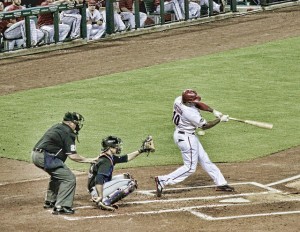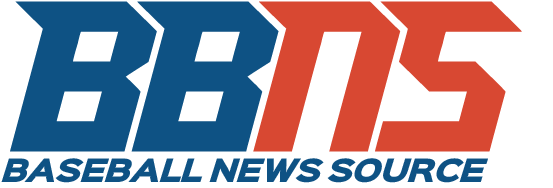
The idea of bringing Arizona OF Justin Upton to Pittsburgh has many in baseball imagining a Pirates’ outfield that includes a former MVP candidate in Upton (fourth in 2011 NL MVP voting) and the prohibitive favorite to win 2012 honors in CF Andrew McCutchen.
That’s the kind of lineup that playoff teams are made of, something the Pirates haven’t been for almost two decades and are trying desperately to become again in a so-far-successful 2012 campaign (50-40 record through the first 90 contests). The Bucs are within one game of the NL Central Division lead and, with just a few weeks remaining until the non-waiver trade deadline, many are expecting the contending Pirates to make a real splash, improving on last year’s trade haul of Derrek Lee and Ryan Ludwick.
There are two things to consider in every trade scenario—leverage, and need—and Pirates General Manager Neal Huntington has a great handful of neither when it comes to dealing for Upton.
Huntington and his front office have been more than patient in their years with the Pirates (Huntington was named GM in late 2007), steering clear of big-name or big-money deals mostly because the organization they inherited was perfectly starved of both big names and big money.
In the past, the Pirates’ record was never good enough to make high-risk, high-reward trades worth exploring. The team simply lacked the assets to do so. Those deals are becoming possible now that the team has a few assets and is beginning to spend money (Pittsburgh’s current $62.46 million payroll is almost double their 2010 Opening Day payroll of $34.94 million, and no team spent more in the draft from 2007-2011).
However, just because the deals can now get done doesn’t mean Huntington is going to do a philosophical about-face.
Huntington is nothing if not shrewd, and nothing demonstrates that quite like the wait-them-out tactic he took to dealing with the New York Yankees on pitcher A.J. Burnett last offseason. During negotiations, the Yankees valued utility guy and power-hitter Garrett Jones as a return for Burnett. Few in Pittsburgh valued Jones enough to keep him in town at the possibility of bringing in a veteran arm in Burnett, but Huntington stood his ground knowing the Yankees were desperate to dump salary.
Eventually, Huntington won that staring contest, acquiring Burnett for a package of three low-ceiling prospects and managing to keep his power bat in Jones. Now, the Pirates are benefiting from having both players on the roster. Burnett is 10-3 with a 3.78 ERA and Jones is batting .271 with 14 home runs and 43 RBI in 71 games played.
It’s not like Huntington to enter into a deal in which he doesn’t have a good bit of leverage, and no one outside of Arizona GM Kevin Towers has much leverage when it comes to dealing for Upton, who has two-plus years of control remaining on his current deal, a five-tool resume and MVP potential.
The only thing working against Towers is that he publicly demonstrated his wishes to move Upton. Conventional wisdom holds that teams overvalue their own trade chips, at least publicly, in order to create the perception that they will have to be swept off their feet by an offer in order to move them, thus sweetening their returns on such deals.
Announcing Upton’s trade candidacy goes against that old line of thinking, and it’s hard to imagine what Towers and the Diamondbacks have to gain from it other than to try to ignite Upton’s play and inflate his trade value.
Still, that public stance doesn’t put Huntington or anyone else not named Kevin Towers in the driver’s seat when it comes to dealing Upton.
If Huntington is going to stick to his guns and find players who can upgrade the team without sacrificing the prospects Pittsburgh spent so much to sign, names like Shane Victorino, Carlos Quentin, Chase Headley or Alfonso Soriano will be available, and it likely won’t take a Starling Marte or Jameson Taillon to acquire them.
In fact, the Pirates might not part with those players under any circumstances.
From Jon Paul Morosi at Fox Sports,
For now, though, Upton is a fantasy. Huntington thus far has refused to part with minor league outfielder Starling Marte or right-hander Jameson Taillon. At least one — and maybe both — would represent a fair price for a player of Upton’s ability (fourth in the NL MVP vote last year) and cost certainty (three years at $38.5 million, starting in 2013).
The Pirates have a reputation for overrating their own prospects — an earnest trait, but one that has resulted in trade proposals other GMs find baffling. Huntington is proud of the farm system he has built, and rightfully so. But now is the time to deal away the likes of Marte and/or Taillon, so the Pirates have a better chance to win at the major league level.
Hanging onto Taillon, Marte or 2011 first-overall selection Gerritt Cole won’t be a sign that the Pirates overvalue their prospects. That the Pirates spent over $14.5 million to acquire those three players is indicative of how much they value them.
If acquiring Upton means that the Pirates will have to part with two or more players of their caliber, Huntington is likely going to look elsewhere.
Huntington has the assets to get a deal for Upton done, but he lacks the leverage and need to force such a deal through, especially considering the assets he’d have to part with to acquire the Arizona outfielder. The Pirates will almost certainly make some kind of move, but other options exist. Upton is not a make-or-break name.
Fan pressure and a chance at a division title notwithstanding, making deals in the absence of favorable trade conditions is too unlike Huntington to be considered likely.
